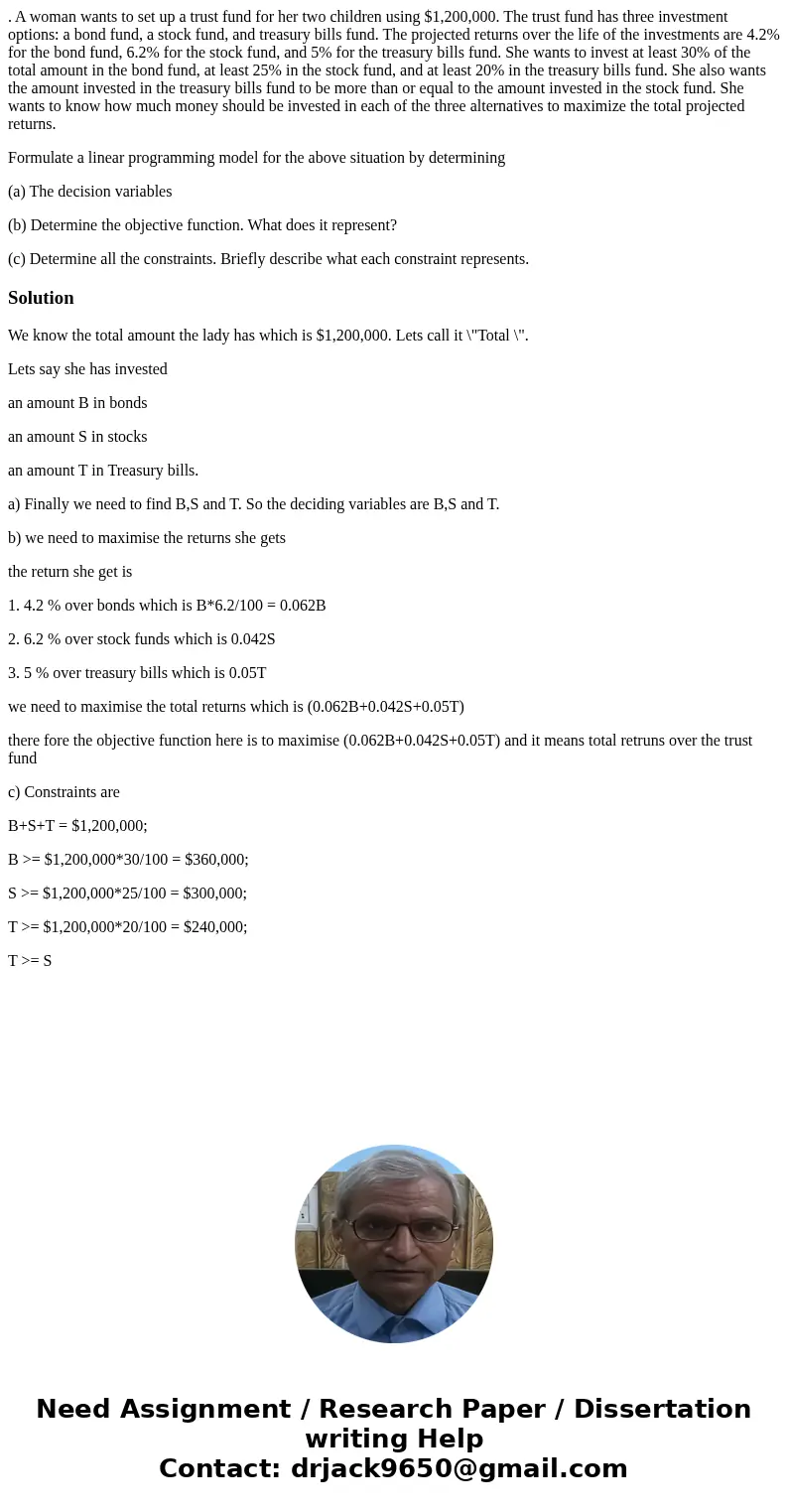A woman wants to set up a trust fund for her two children u
. A woman wants to set up a trust fund for her two children using $1,200,000. The trust fund has three investment options: a bond fund, a stock fund, and treasury bills fund. The projected returns over the life of the investments are 4.2% for the bond fund, 6.2% for the stock fund, and 5% for the treasury bills fund. She wants to invest at least 30% of the total amount in the bond fund, at least 25% in the stock fund, and at least 20% in the treasury bills fund. She also wants the amount invested in the treasury bills fund to be more than or equal to the amount invested in the stock fund. She wants to know how much money should be invested in each of the three alternatives to maximize the total projected returns.
Formulate a linear programming model for the above situation by determining
(a) The decision variables
(b) Determine the objective function. What does it represent?
(c) Determine all the constraints. Briefly describe what each constraint represents.
Solution
We know the total amount the lady has which is $1,200,000. Lets call it \"Total \".
Lets say she has invested
an amount B in bonds
an amount S in stocks
an amount T in Treasury bills.
a) Finally we need to find B,S and T. So the deciding variables are B,S and T.
b) we need to maximise the returns she gets
the return she get is
1. 4.2 % over bonds which is B*6.2/100 = 0.062B
2. 6.2 % over stock funds which is 0.042S
3. 5 % over treasury bills which is 0.05T
we need to maximise the total returns which is (0.062B+0.042S+0.05T)
there fore the objective function here is to maximise (0.062B+0.042S+0.05T) and it means total retruns over the trust fund
c) Constraints are
B+S+T = $1,200,000;
B >= $1,200,000*30/100 = $360,000;
S >= $1,200,000*25/100 = $300,000;
T >= $1,200,000*20/100 = $240,000;
T >= S

 Homework Sourse
Homework Sourse